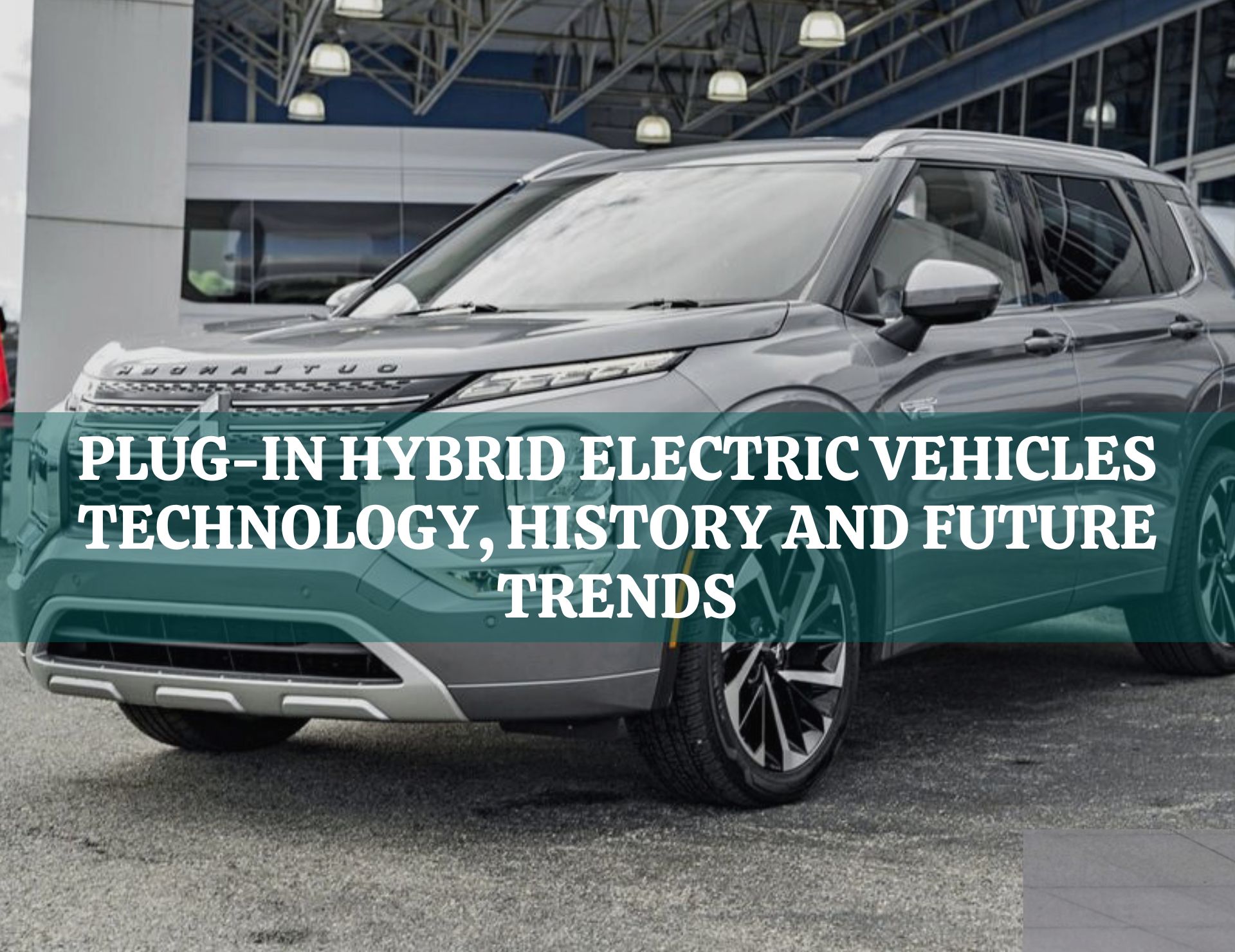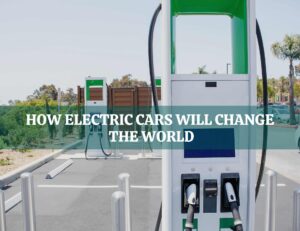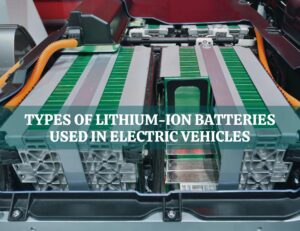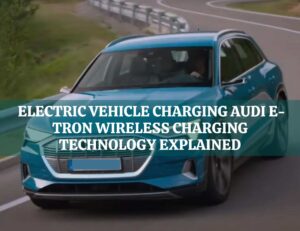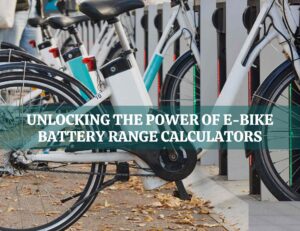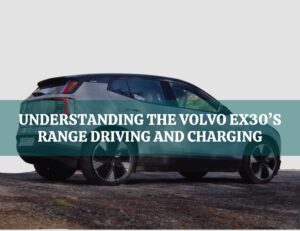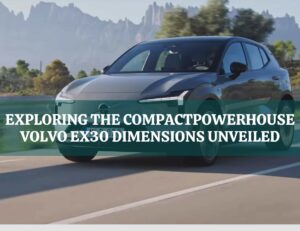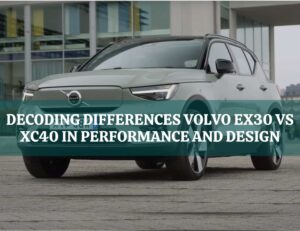This article explores Plug-in Hybrid Electric Vehicles (PHEVs), covering their technology, history, benefits, and current trends. We will discuss how PHEVs work, their development over time, their advantages and challenges, and what the future holds. Finally, we will conclude with a summary and answer some frequently asked questions about PHEVs.
What is a Plug-in Hybrid Electric Vehicle?
A Plug-in Hybrid Electric Vehicle (PHEV) is a type of vehicle that combines a gasoline or diesel engine with an electric motor and a rechargeable battery. Unlike traditional hybrids, PHEVs can be plugged into an external power source to recharge their battery. This allows them to run on electric power alone for a certain distance, usually between 20 to 50 miles, before switching to the internal combustion engine (ICE) when the battery is depleted.
PHEVs use two main power sources. The electric motor is ideal for short trips and city driving, providing a smooth and quiet ride with zero emissions. The internal combustion engine kicks in for longer journeys, ensuring that the vehicle can travel further without needing to recharge. This combination of power sources offers greater flexibility and can help reduce fuel consumption and emissions.
How Did PHEVs Develop Over Time?

The concept of hybrid vehicles dates back to the late 19th century. In 1899, Ferdinand Porsche developed the Lohner-Porsche Mixte Hybrid, which combined an internal combustion engine with electric motors. However, the popularity of gasoline-powered cars and abundant fossil fuel supplies led to a decline in interest in hybrid vehicles during the mid-20th century.
Interest in alternative fuel vehicles was renewed during the 1970s oil crisis, but it wasn’t until the late 1990s that hybrids gained significant traction. The launch of the Toyota Prius in 1997 marked a significant milestone.
In 2008, BYD introduced the F3DM in China, the world’s first mass-produced PHEV. This was followed by the Chevrolet Volt in 2010, one of the first PHEVs available in North America. Since then, many automakers have developed PHEV models, contributing to their growing popularity.
What is the history of hybrid electric vehicle
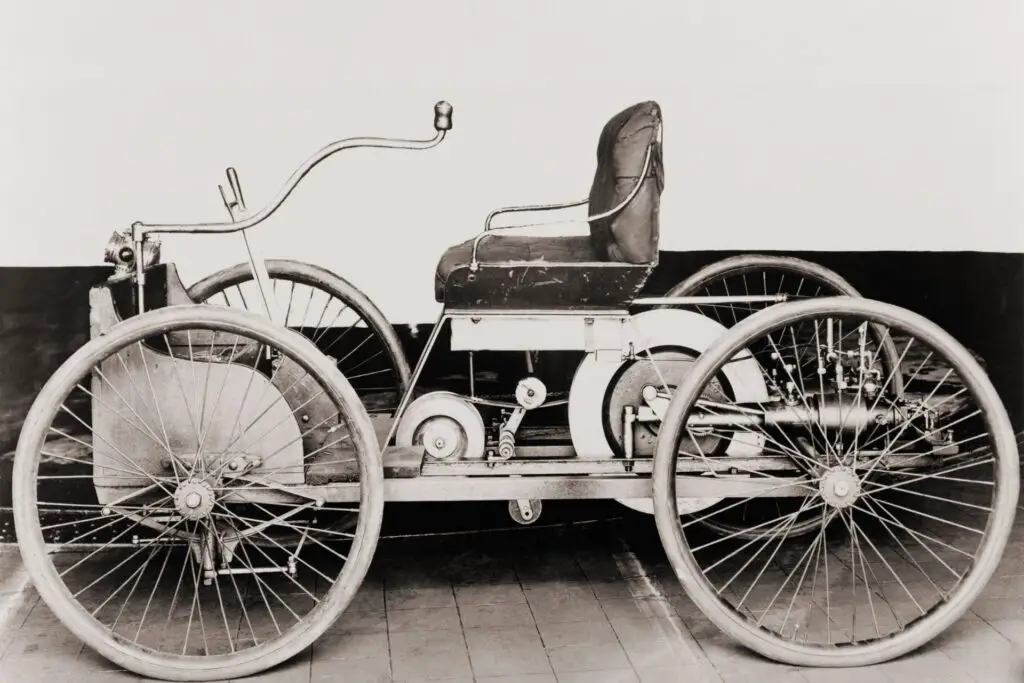
The history of Plug-in Hybrid Electric Vehicles (PHEVs) reflects a series of technological advancements, evolving consumer preferences, and increasing environmental awareness. Here’s a detailed look at the key milestones in the development of PHEVs:
Early Developments (Pre-2000s)
Early Hybrid Concepts:
- Late 1800s to Early 1900s: The concept of hybrid vehicles dates back to the late 19th and early 20th centuries. Ferdinand Porsche developed the Lohner-Porsche Mixte Hybrid in 1899, which combined an internal combustion engine with electric motors.
Decline and Rebirth:
- Mid-20th Century: Interest in hybrid vehicles waned with the rise of affordable gasoline-powered cars and abundant fossil fuel supplies.
- 1970s: The oil crisis renewed interest in alternative fuel vehicles. However, battery technology and the necessary infrastructure were not yet advanced enough for widespread adoption.
Rise of Modern Hybrids and Early PHEVs (2000s)

Initial Hybrid Success:
- 1997: Toyota introduced the Prius, the world’s first mass-produced hybrid electric vehicle (HEV), marking a significant milestone in hybrid technology.
Early PHEV Prototypes:
- 2003: California Cars Initiative (CalCars) began modifying Toyota Priuses to create the first modern PHEVs, demonstrating the feasibility of plug-in technology.
Commercialization and Market Growth (Late 2000s to 2010s)

First Commercial PHEVs:
- 2008: BYD introduced the F3DM in China, the world’s first mass-produced plug-in hybrid car.
- 2010: General Motors launched the Chevrolet Volt in the United States, one of the first PHEVs available in North America, featuring an all-electric range of 35 miles.
Expansion of PHEV Offerings:
- 2011: Toyota released the Prius Plug-in Hybrid, an extension of its successful Prius line.
- 2013: Mitsubishi introduced the Outlander PHEV, the first plug-in hybrid SUV, which became highly popular in Europe and other markets.
Technological Advancements and Market Maturity (2010s to Present)

Improved Battery Technology:
- Advances in lithium-ion battery technology improved energy density, reduced costs, and extended the electric range of PHEVs.
Increased Model Availability:
- Major automakers like Ford, BMW, and Volvo introduced various PHEV models across different segments, including sedans, SUVs, and luxury vehicles.
- 2016: BMW launched the 330e and 740e, showcasing plug-in hybrid technology in premium vehicles.
Regulatory and Market Incentives:
- Governments worldwide implemented incentives, such as tax credits, rebates, and emissions regulations, encouraging consumers to adopt PHEVs.
Current Trends and Future Directions

Growing Popularity and Sales:
- PHEV sales have steadily increased, with significant growth in markets like Europe, China, and North America.
- 2020: The global PHEV market saw substantial growth due to stricter emissions regulations and increased consumer awareness of environmental issues.
Advancements in Charging Infrastructure:
- Expansion of public and private charging networks has made it easier for PHEV owners to recharge their vehicles, addressing one of the major barriers to adoption.
Integration with Renewable Energy:
- The integration of PHEVs with renewable energy sources and smart grid technologies is becoming more common, promoting sustainable energy use and reducing reliance on fossil fuels.
Future Innovations:
- Ongoing research focuses on improving battery technology, increasing electric range, reducing costs, and enhancing overall vehicle performance.
- Solid-State Batteries: Potential advancements in solid-state batteries could further revolutionize PHEVs by offering higher energy density and faster charging times.
The history of plug-in hybrid electric vehicles is marked by early innovations, gradual development, and significant technological advancements in recent decades. PHEVs have evolved from experimental concepts to commercially viable products, playing a crucial role in the transition towards more sustainable transportation.
As technology continues to advance and infrastructure improves, PHEVs are likely to remain an important part of the automotive landscape, bridging the gap between traditional internal combustion engine vehicles and fully electric vehicles.
What Are the Advantages of PHEVs?

One of the primary advantages of PHEVs is their ability to reduce emissions. When driven in electric mode, PHEVs produce no tailpipe emissions, making them environmentally friendly, especially for short trips and city driving. This can help improve air quality and reduce greenhouse gas emissions.
PHEVs also offer improved fuel efficiency. By using electric power for shorter trips, PHEVs can significantly reduce the amount of gasoline or diesel consumed. This can result in lower fuel costs for drivers, especially if they have access to affordable or free charging facilities. Additionally, many governments offer incentives such as tax credits and rebates for purchasing PHEVs, further reducing the overall cost of ownership.
Another advantage is the flexibility that PHEVs provide. They offer the convenience of electric driving with the extended range of a traditional internal combustion engine. This means drivers don’t have to worry about running out of battery power on long trips, as the ICE can take over when needed. This combination of electric and gasoline power makes PHEVs a practical choice for a wide range of driving needs.
Popular PHEV Models:
- Toyota Prius Prime
- Chevrolet Volt (discontinued, but a notable model)
- Ford Fusion Energi
- BMW i3 REx
- Mitsubishi Outlander PHEV
What is a plug-in hybrid EV technology?
Powertrain Configuration
PHEVs combine an internal combustion engine (ICE) with an electric motor and a rechargeable battery. There are several configurations for how these components interact:
- Series Hybrid: The electric motor is the primary drive, and the ICE functions mainly as a generator to charge the battery.
- Parallel Hybrid: Both the ICE and the electric motor can drive the wheels directly.
- Series-Parallel Hybrid: This configuration allows the vehicle to operate in either series or parallel mode, depending on driving conditions and efficiency needs.
Battery System
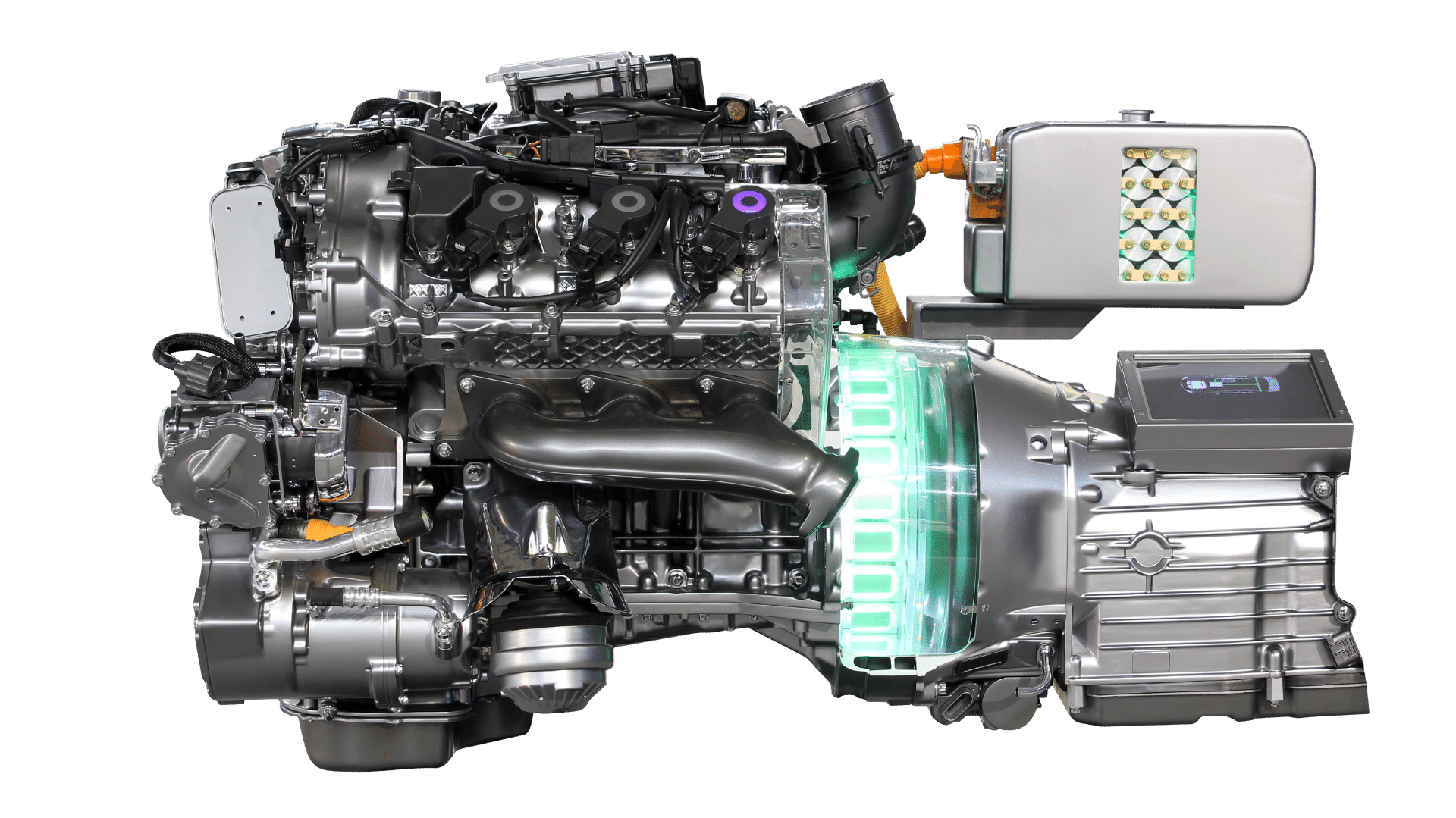
The battery in a PHEV is larger than in a conventional hybrid but smaller than in a fully electric vehicle (EV). Key aspects include:
- Type: Most PHEVs use lithium-ion (Li-ion) batteries due to their high energy density, long cycle life, and relatively lightweight.
- Capacity: Typically ranges from 8 kWh to 18 kWh, which allows for an all-electric range of 20 to 50 miles.
- Management System: A sophisticated Battery Management System (BMS) monitors the battery’s state of charge, health, and temperature to ensure optimal performance and longevity.
Electric Motor
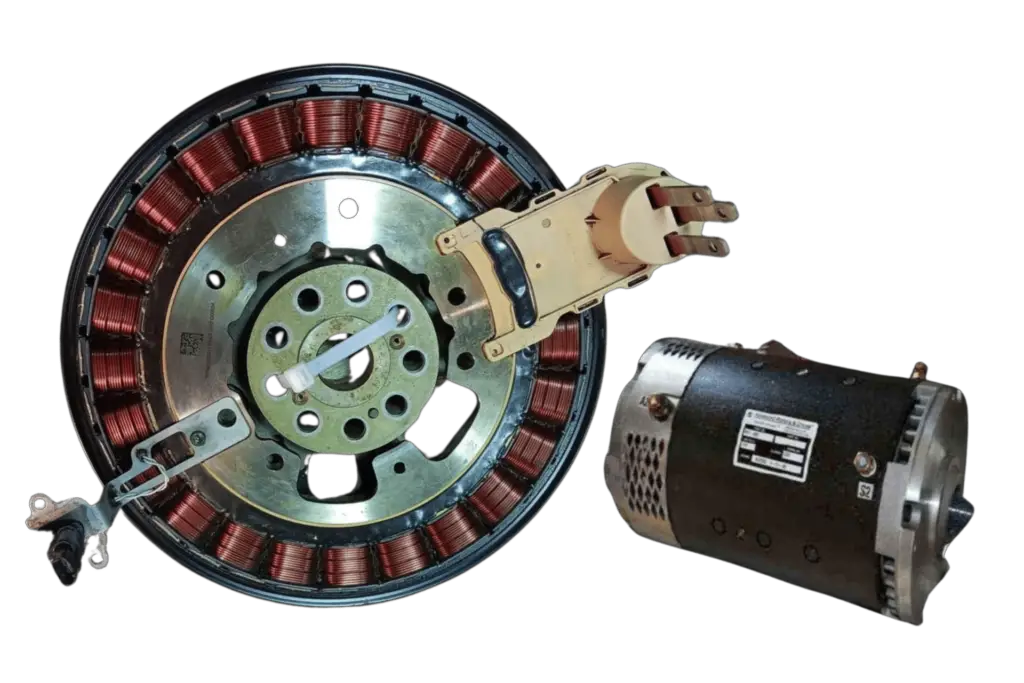
PHEVs use one or more electric motors that serve multiple functions:
- Propulsion: Provide power to drive the vehicle in all-electric mode or assist the ICE in hybrid mode.
- Regenerative Braking: Capture kinetic energy during braking and convert it into electrical energy to recharge the battery.
- Generator: In some configurations, the motor can also act as a generator to convert mechanical energy from the ICE into electrical energy.
Internal Combustion Engine (ICE)
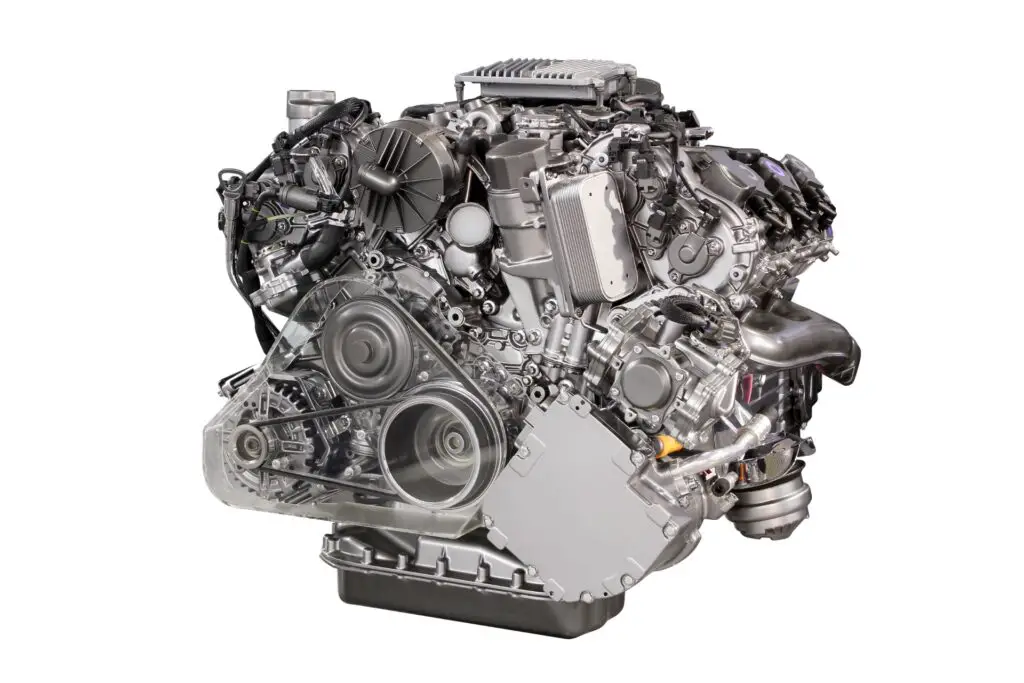
The ICE in a PHEV is optimized for efficiency and may feature advanced technologies such as:
- Direct Fuel Injection: Improves fuel combustion efficiency.
- Turbocharging: Enhances power output while maintaining fuel efficiency.
- Variable Valve Timing: Adjusts the timing of valve operations for optimal performance under different conditions.
Transmission
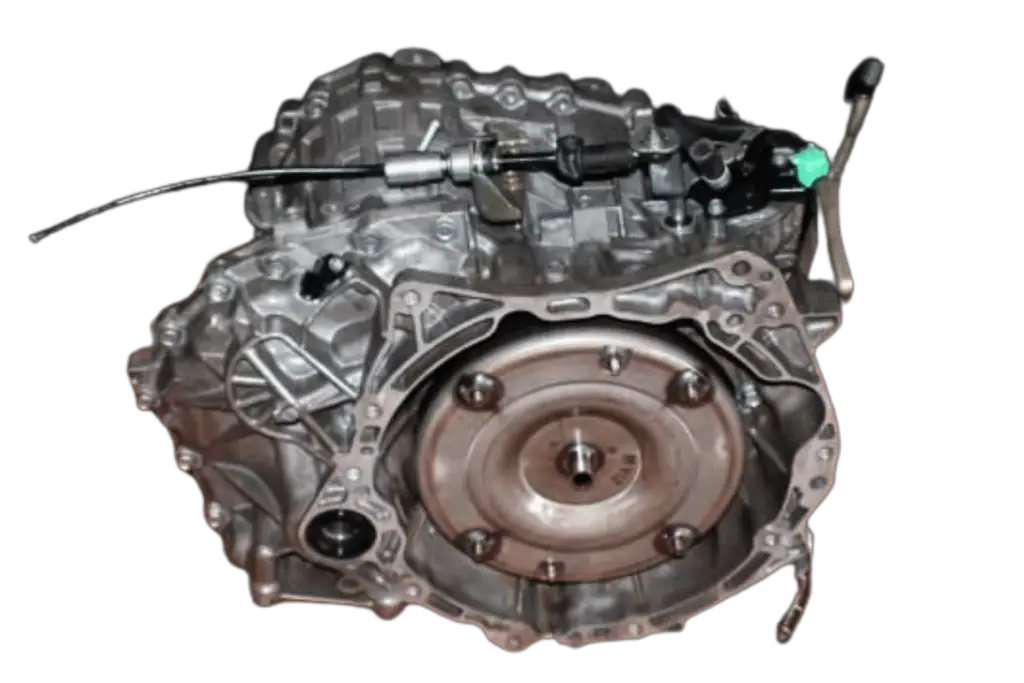
PHEVs use specialized transmissions to integrate power from both the ICE and the electric motor(s). Common types include:
- Continuously Variable Transmission (CVT): Offers smooth and efficient power delivery by continuously adjusting gear ratios.
- Dual-Clutch Transmission (DCT): Provides quick and efficient gear changes, enhancing performance and fuel efficiency.
- Planetary Gear Sets: Used in series-parallel hybrids to seamlessly blend power from the ICE and electric motor.
Charging System
PHEVs can be charged by plugging into an external power source. Key components include:
- Onboard Charger: Converts AC electricity from the grid to DC electricity to charge the battery.
- Charging Port: Standardized connectors (e.g., Type 1, Type 2) for compatibility with public and home charging stations.
- Charging Levels: PHEVs can be charged at different levels:
- Level 1 (120V): Standard household outlet; slower charging, suitable for overnight.
- Level 2 (240V): Dedicated home or public charging station; faster charging, typically a few hours.
- Level 3 (DC Fast Charging): Not commonly used for PHEVs, more typical for full EVs.
Control Systems
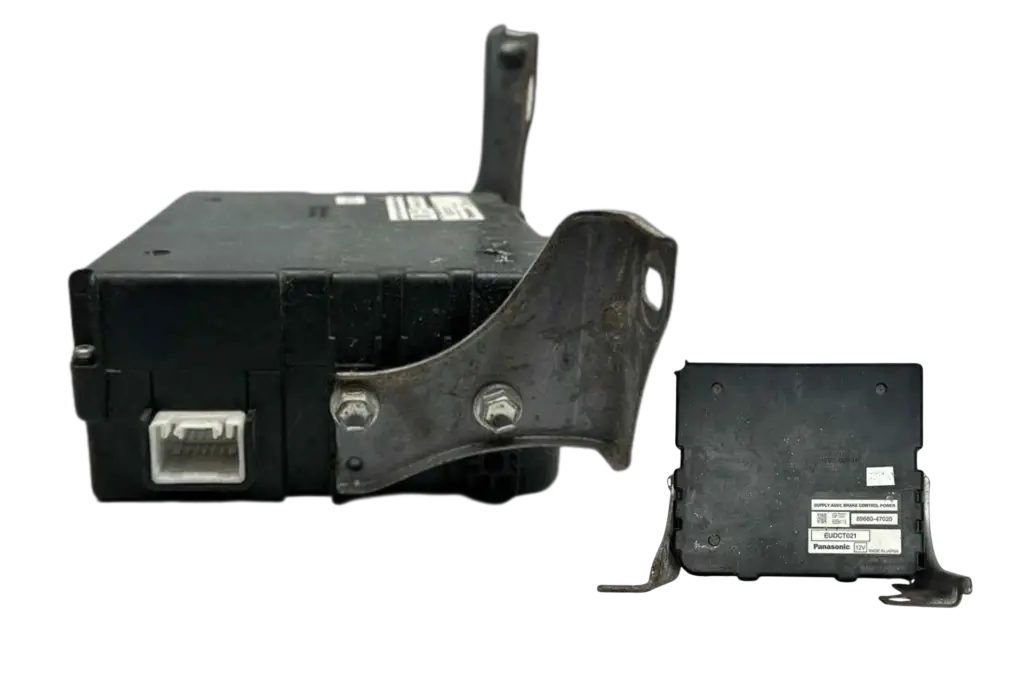
Advanced control systems manage the interaction between the ICE, electric motor, battery, and transmission:
- Hybrid Control Unit (HCU): Oversees the operation of the powertrain, deciding when to use electric power, ICE power, or both.
- Energy Management System (EMS): Optimizes energy use to maximize efficiency and range.
- Regenerative Braking Control: Manages the regeneration process to optimize energy capture while maintaining braking performance.
Vehicle Dynamics and Efficiency

PHEVs incorporate various technologies to enhance driving experience and efficiency:
- Eco Driving Modes: Allow drivers to select settings that prioritize fuel efficiency and electric range.
- Predictive Energy Management: Uses GPS and driving pattern data to optimize energy use based on upcoming terrain and traffic conditions.
- Aerodynamics and Lightweight Materials: Improve overall efficiency and extend electric range.
What Are the Challenges of PHEVs?
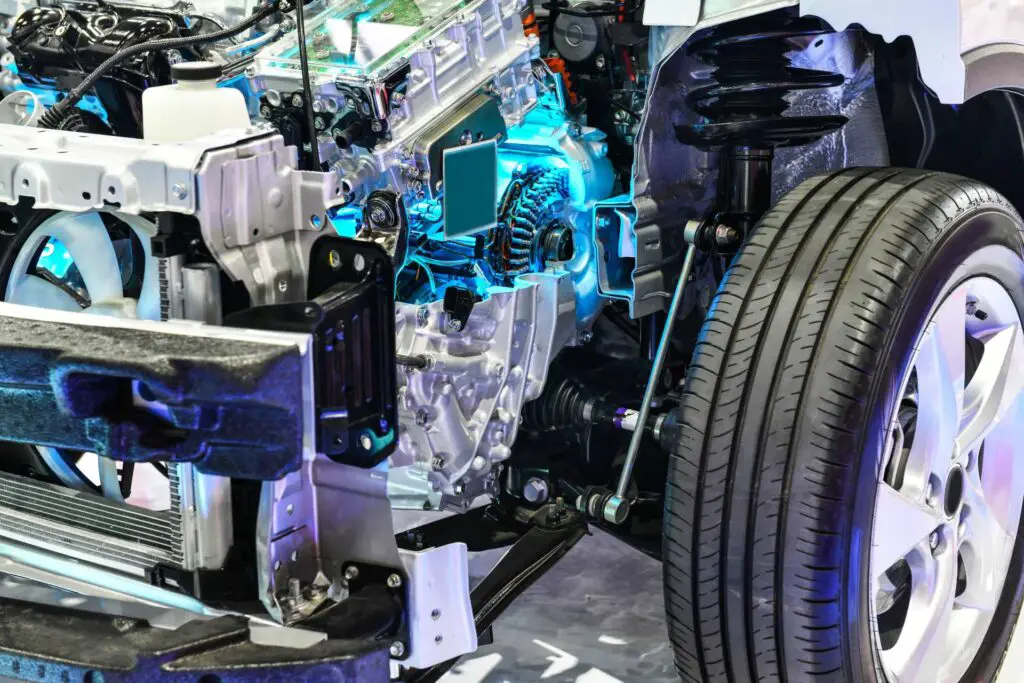
Despite their benefits, PHEVs also face several challenges. One of the main challenges is the higher initial cost compared to traditional vehicles and conventional hybrids. This is due to the larger battery and more complex powertrain system. However, the cost can be offset by fuel savings and government incentives over time.
Another challenge is the availability of charging infrastructure. While public and private charging networks are expanding, they are not yet as widespread as traditional gas stations. This can be a concern for drivers who need to charge their vehicles regularly, especially if they live in areas with limited access to charging stations.
Battery life and replacement costs are also considerations. Although advances in battery technology have improved the lifespan and performance of PHEV batteries, they can still degrade over time and may need to be replaced. This can be a significant expense, although many manufacturers offer warranties and other support to help mitigate this issue.
What Is the Future of PHEVs?

The future of PHEVs looks promising, with continued advancements in battery technology, charging infrastructure, and vehicle design. As battery technology improves, we can expect to see PHEVs with longer electric ranges, faster charging times, and lower costs. This will make PHEVs even more attractive to consumers and help increase their adoption.
Governments worldwide are also implementing stricter emissions regulations and offering incentives to encourage the use of low-emission vehicles, including PHEVs. This will drive further investment and innovation in the PHEV market, leading to the development of new models and technologies.
Additionally, the integration of PHEVs with renewable energy sources and smart grid technologies will promote sustainable energy use and reduce reliance on fossil fuels. This will help further reduce the environmental impact of transportation and support the transition to a more sustainable future.
Conclusion
Plug-in Hybrid Electric Vehicles (PHEVs) offer a practical and environmentally friendly solution for reducing emissions and fuel consumption. By combining the benefits of electric driving with the extended range of an internal combustion engine, PHEVs provide flexibility and convenience for a wide range of driving needs.
While there are challenges to overcome, continued advancements in technology and infrastructure, along with government support, will drive the future growth and adoption of PHEVs. As we move towards a more sustainable future, PHEVs will play an important role in the transition to cleaner transportation.
FAQs
How do I charge a PHEV?
Charging a PHEV is straightforward. You can plug it into a standard household outlet (Level 1), which usually takes several hours to fully charge the battery.
For faster charging, you can use a Level 2 charger, typically found at public charging stations or installed at home. Level 2 chargers can charge a PHEV in a few hours.
How far can a PHEV travel on electric power alone?
The electric-only range of a PHEV varies by model but typically ranges from 20 to 50 miles on a full charge. This range is suitable for most daily commutes and short trips. When the battery is depleted, the internal combustion engine takes over, allowing for extended travel.
Are there maintenance differences between PHEVs and conventional vehicles?
PHEVs generally require less maintenance for the electric motor and battery compared to the internal combustion engine. However, regular maintenance for the ICE, such as oil changes and engine checks, is still necessary. Additionally, PHEVs have complex powertrain systems that may require specialized service.
Can PHEVs use regenerative braking?
Yes, PHEVs use regenerative braking to capture kinetic energy during braking and convert it into electrical energy to recharge the battery. This process helps improve the overall efficiency of the vehicle and extends the electric range.
What incentives are available for PHEV owners?
Many governments offer incentives to encourage the adoption of PHEVs. These can include tax credits, rebates, reduced registration fees, and access to carpool lanes. Incentives vary by location, so it’s best to check with local authorities for specific details.
How long do PHEV batteries last?
PHEV batteries are designed to last for many years, typically around 8 to 15 years, depending on usage and driving conditions. Most manufacturers offer warranties for the battery, providing coverage for a specific period or mileage.
Advances in battery technology are continually improving longevity and performance.


